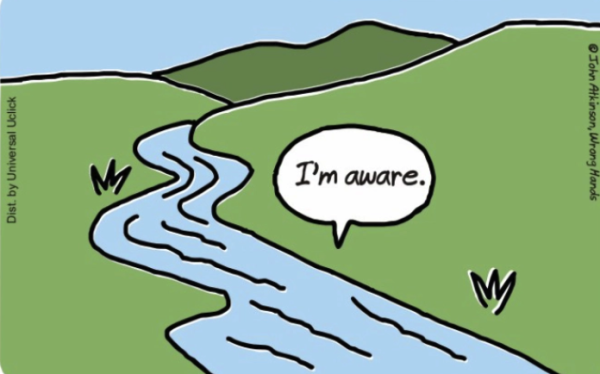Ten books fit for all readers
Whether you prefer historical fiction, classics, nonfiction, or some lighter beach reading, there’s a book out there for everyone. Here are my top five picks in a range of different genres and styles and another five worth reading.
- The Song of Achilles by Madeline Miller: In my opinion the best Homer retelling since the works of Margaret Atwood, this novel, based on the Iliad, artfully blends Homer’s epic with Miller’s own creative genius. The story follows Achilles and his sidekick Patroclus from childhood until their ends during the Trojan War, exploring the possibility that Achilles and Patroclus were lovers. Told from the perspective of the less renowned but, in some ways, more virtuous Patroclus, The Song of Achilles investigates the ability of humans to love, and how far love—from familial, fraternal, and filial love to romantic and sexual love—will stretch when tested. Read this book if you love Greek mythology, Homer, or epic love stories, compelling characters, and spare but beautiful prose.
- If I Stay by Gayle Forman: A young adult novel that has just been made into a movie currently playing in theaters, the book follows Mia, a talented cellist, as she is severely injured in a car crash and hovers between life and death as she watches her body being moved to a hospital and operated upon. While in a coma, she reflects upon her life and whether or not she should stay in this life or move on to the next. Music and Mia’s boyfriend Adam play pivotal roles in Forman’s spellbinding debut novel. I would recommend it if you like tearjerkers, music, or the theme of man vs. self.
- Unbroken by Laura Hillenbrand: This true story of Louis Zamperini, an Olympic runner from California who served in World War II and was captured by the Japanese, declared officially dead, and treated ruthlessly in a prison camp in Tokyo, is one of the most inspirational books I have ever read. Hillenbrand crafts the story with grace and style, illustrating the harsh realities of World War II, Zamperini’s courage, and the value of human life. While many World War II books, as well as other mediums of discussing and exploring the tragedies of the war, focus on the European stage, particularly the Holocaust, Unbroken brings to light the brutality and bravery in the Pacific theater. As an American of Italian descent, like Zamperini, the story truly could not have captured my attention and empathy any more. I would highly recommend this book to anyone who is interesting in history, running, or human nature as exhibited by real events and people not too long ago.
- Looking for Alaska by John Green: Through many facets, John Green has recently taken control of young American pop culture; The Fault in Our Stars in particular has made a mark. However, I actually preferred his slightly lesser-known novel Looking for Alaska, a classic tale of an inexperienced teenager dissatisfied with his tedious life falling in love with an exciting new girl. In this case, the boy is Miles “Pudge” Halter and the girl is Alaska, a beautiful but emotionally destructive young woman, whom he meets at his new boarding school. As he integrates himself into her social circle, Pudge gains new experiences and begins to look differently at the world. Pudge’s particular idiosyncrasy is that in his spare time, he memorizes the last words of famous people, and this connection to death heartbreakingly intertwines with the story, causing him to learn lessons about the significance of life and love. Read this book if you liked Fault in Our Stars but are looking for something a little less stereotypical as well as tragic in a distinctive way.
- Dubliners by James Joyce:A little more understandable than Joyce’s masterpiece Ulysses, Dubliners is a collection of short stories, written in 1914, about the breakdown of Irish society and the struggle of Ireland to form its own national identity. In my opinion, it is the pinnacle of Irish literature from the twentieth century, topping even the works of W.B. Yeats and Samuel Beckett. Each shot story represents a different aspect of life in Dublin, when vast bleakness lay over the city, and Ireland couldn’t decide whether to strive for the cosmopolitanism of the European continent or turn back to truly Irish roots in order to finally flourish after so much oppression. Joyce writes breathtakingly, from the incredible abundance of subtleties hidden with the text to the scintillating last lines of each short story, and the last short story, “The Dead,” is one of the best short stories of all time, if not the best. Dubliners is one of my favorite books, a collection I can pick up anywhere at any time and peruse with joy, discovering new elusive metaphors, connections, and imagery. Read Dubliners if you like Irish literature, short stories, and truly gorgeous, masterful writing.
And five other great books to consider reading!
- Memoirs of a Geisha by Arthur Golden: Exactly what it sounds like—the fictional memoirs of a Japanese geisha, Chiyo, with an enthralling plot and great secondary characters. The novel is a beautiful take on the age-old idea that people (especially entertainers, prostitutes, etc.) are not always what they seem to be on the surface. I didn’t know much about Japan before reading this book, but Golden does a phenomenal job of giving the reader enough information to sate his/her curiosity but not enough to overwhelm.
- A Dangerous Fortune by Ken Follett: Set in nineteenth-century London, a classic Follett novel insofar as having a huge cast of compelling characters and a large web of evil; probably my favorite of Ken Follett’s. My biggest issue with Follet is generally that he does not create lovable characters whose lives and deaths I care about, and in my opinion he doesn’t succeed very well in A Dangerous Fortune either, but the scintillating strength of his antagonists (Micky Miranda and Augusta are the best) make up for the lack of believable heroes.
- The Book Thief by Markus Zusak: One of the best contemporary novels set in Nazi Germany. Although the protagonist is Liesel Meminger, a young German girl who adores books so much that she steals them (which I completely empathized with, being a huge literature obsessee), the narrator is Death itself. This unusual, almost medieval twist lends an appropriate heaviness to a novel taking place in a time of hideous inhumanity and violence. In particular, I enjoyed Zusak’s on-point, almost childlike descriptions, which sharpen the horror of the events.
- Atonement by Ian McEwan: Another gripping novel that takes place during World War II, this time about the power of love through hardship with a heartrending twist at the end. I admired the book for its unusual narrator: both the protagonist and the antagonist, the innocent villain, she was equally respected and loved by me. Additionally, I loved the fact that seemingly minor characters came back in chilling ways (pay attention to Lola!).
- Never Let Me Go by Kazuo Ishiguro: A fascinating, gorgeously written book that explores the dangers of science and technology from a thoroughly human perspective. Following the clone Kathy H. and her friends Ruth and Tommy, the novel often jumps around in time yet remains cohesive. This story is the best sort of scientific/fantastical creation: one in which the scenario is not human but the emotions and conditions truly are. I loved the fact that it also celebrates art and creativity as the pinnacle of human nature, for without art and literature, are we not just animals, living and breathing and hell-bent on survival?


